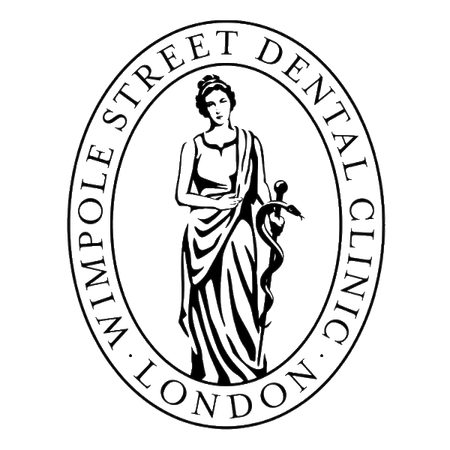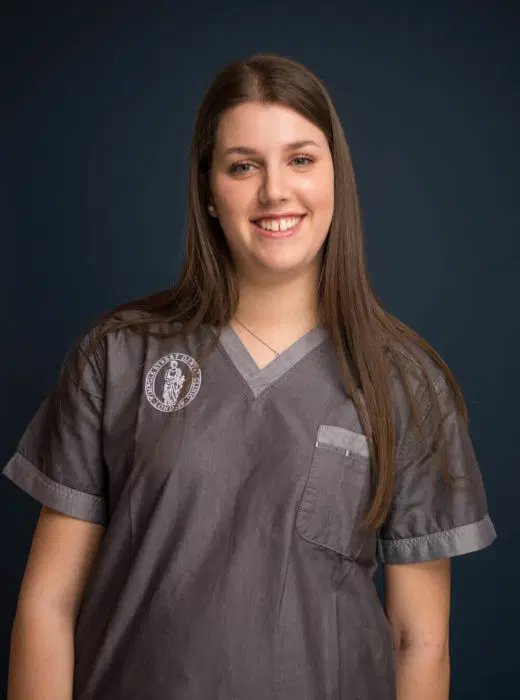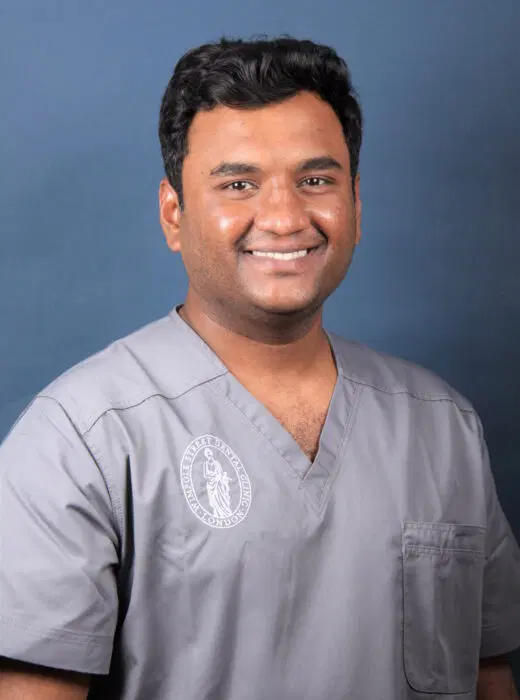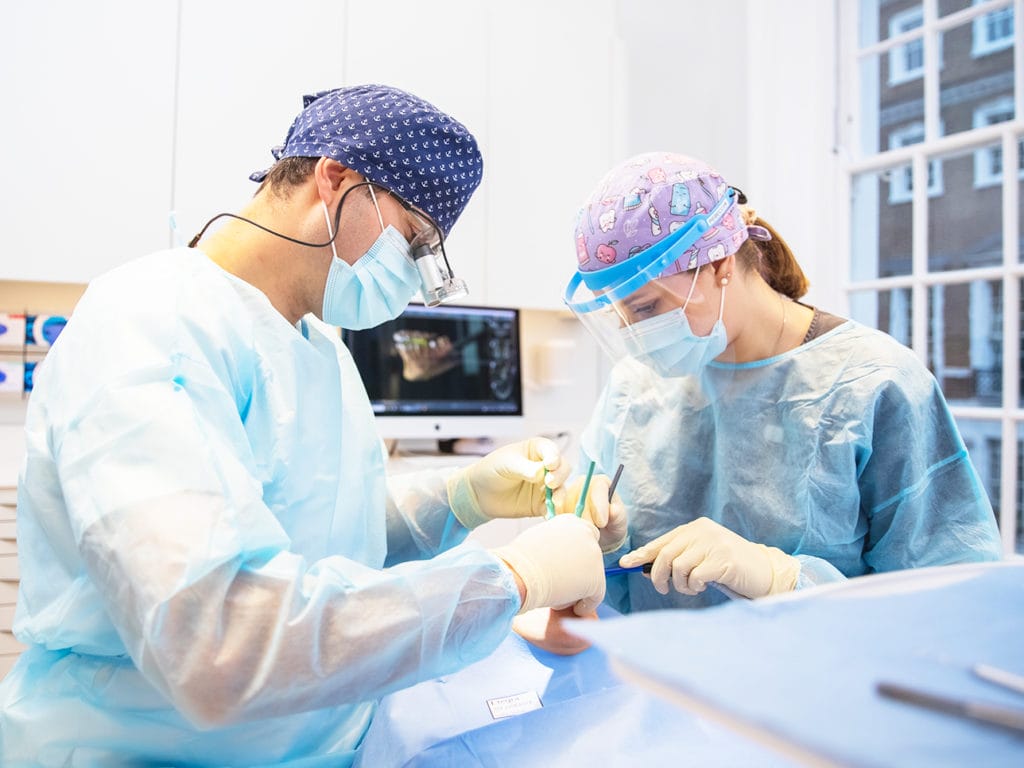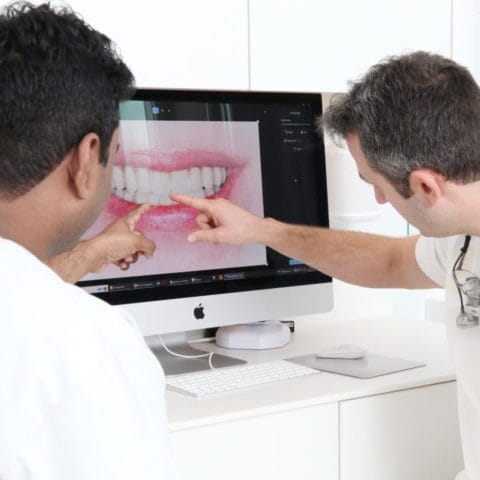Maryland Dental Bridges (Adhesive Prosthetics in London)
There are several ways to replace a missing tooth. Maryland bridges are appealing as they do not involve any surgery or invasion of adjacent teeth.

Treatment
90 minutes

Price
From £2,000

Team Experience
25+ years

Recovery Time
1 hour

Google Rating
★★★★★ (4.9)
Examples of our work
Maryland bridges are an effective solution for replacing missing teeth in a minimally invasive way, using a framework bonded to the back of adjacent teeth. At Wimpole Street Dental Clinic, our Maryland bridge case studies demonstrate how we restore smiles seamlessly with this conservative approach, offering stability, aesthetics, and functionality. Each case showcases our commitment to precision and patient satisfaction, helping individuals regain confidence with natural-looking, durable results.

Simply put, a Maryland bridge is a fake tooth fabricated with a wing, which is then bonded to an adjacent tooth. Traditionally they were made with metal and ceramic but these days we can trust full ceramic ones, which are more aesthetic.
The anchoring tooth requires only very minimal preparation (no local anaesthetic needed), which is quite different from conventional bridges. The bonding strength is very durable but their success does depend on the power of the patient’s bite. That is why Maryland bridges are more commonly used on specific teeth, such as incisors.
This procedure is especially suitable for adolescent patients for whom implantation due to future jaw growth is not yet possible. For adults, this procedure can be a valuable alternative to consider compared with the dental implant treatment option.
What’s the difference between an adhesive bridge vs. implants?
If you need a dental implant you may still be able to consider an adhesive dental bridge. Let us show you what an adhesive bridge is, and how we make them in our video with before-and-after pictures.
Meet your award-winning Maryland Dental Bridges dentist and team…
- We have over 75+ years of combined dentistry experience across our specialist team.
- 10,000+ treatments performed and counting.
- We are leaders in the dental industry – we regularly teach, lecture and publish our research work internationally.
Our Expertise
Nestled in the prestigious medical heart of London, our clinic is privileged to have Professor Mehl, a renowned specialist with a sterling track record in Maryland dental bridges.
His expertise is backed by over 100 successful placements and a wealth of contributions to dental science through his peer-reviewed publications across national and international forums.
This expertise is complemented by our team of adept dental technicians, who possess profound experience in crafting resin-bonded dental bridges, ensuring each treatment is tailored to the highest standards of precision and care.
Contrary to expectations, accessing such high-caliber dental solutions is surprisingly affordable. We invite you to review our fee structure for a clear understanding of the costs associated with our custom-made adhesive bridges, reflecting our commitment to providing value alongside excellence in dental care.

HELEN LI
Wimpole Street Dental has the highest most ethical standard of work, personable approach, clear and safe procedures, top notch excellence and reliability in treatment provided with utmost professionalism from crème de la crème world class specialists all under one roof.
What are the preconditions for a Maryland bridge?
An important prerequisite for the treatment of adhesive bridges is the adjacent (abutment teeth) being free from caries or cavities and having sufficient tooth enamel. The intact enamel is needed to bond the false tooth – the cantilever – durable to the adjacent teeth. Smaller fillings in the abutment teeth can be left in place but should be specially treated (conditioned) before the dental bridge is bonded and should be fully enveloped by the bridge’s wings.
It is also important that the size of the gap corresponds to the tooth to be replaced for the perfect fit. If you grind or press your teeth, this issue needs to be considered. If you have already received orthodontic treatment, an eight to six-week retention phase (no more active movement of the teeth) should be honoured prior to the insertion of an adhesive bridge. In all guidelines for all-ceramic crowns and bridges, single-wing all-ceramic adhesive bridges are listed and recommended as an evidence-based therapy. In addition, single-span adhesive bridges with ceramic frameworks to replace single or two incisors that are missing next to each other are now the standard in dental care during adolescence to address this dental problem.
Take your first step with Wimpole Street Dental Clinic
Discover the path to a brighter smile with Wimpole Street Dental Clinic! Our team of skilled professionals utilizes advanced technology to provide personalised dental care in a comfortable setting.



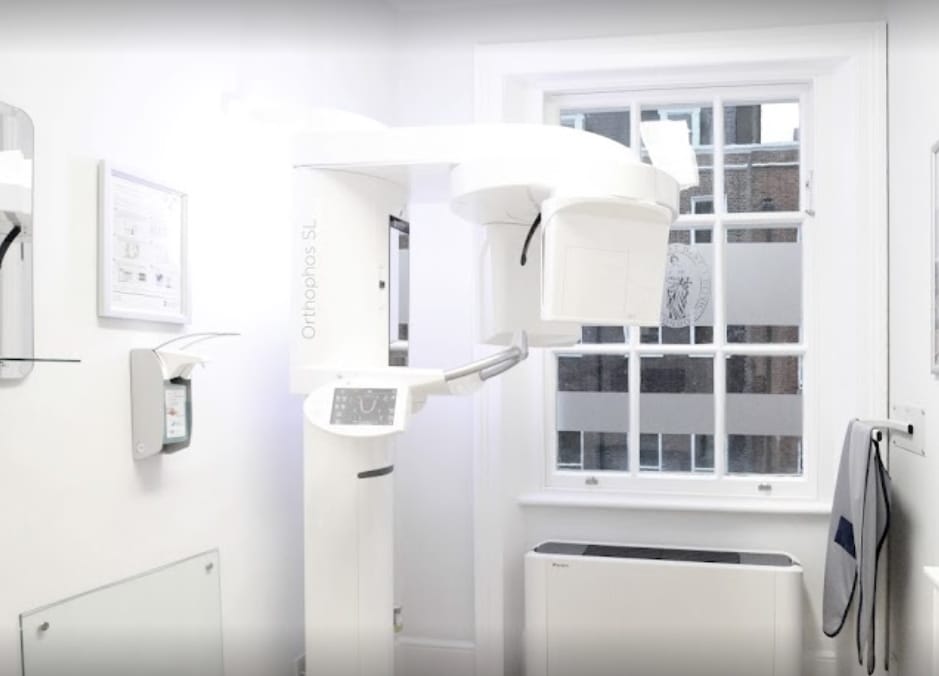

New page design
Written by: Prof Dr Christian Mehl
Medically reviewed by: Dr Raul Costa
Author biography added
Written by: Prof Dr Christian Mehl
Medically reviewed by: Dr Raul Costa
Original content created
Written by: Prof Dr Christian Mehl
Medically reviewed by: Dr Raul Costa
Wimpole St Dental Clinic has strict sourcing guidelines and relies on peer-reviewed studies, academic research institutions, and medical associations. We avoid using tertiary references. You can learn more about how we ensure our content is accurate and current by reading our editorial policy.
- Gutmann JL. The Origin of the Maryland Bridge. J Hist Dent. 2019 Fall;67(2):110. PMID: 32189627.
- Thompson VP. Whence the Maryland Bridge? The evolution of the adhesive bridge. Dent Hist. 2017 Jan;62(1):9-14. PMID: 29949309.
- Tezulas E, Yildiz C, Evren B, Ozkan Y. Clinical procedures, designs, and survival rates of all-ceramic resin-bonded fixed dental prostheses in the anterior region: A systematic review. J Esthet Restor Dent. 2018 Jul;30(4):307-318. doi: 10.1111/jerd.12389. Epub 2018 Aug 16. PMID: 30113136.
- Edelhoff D, Sorensen JA. Tooth structure removal associated with various preparation designs for anterior teeth. J Prosthet Dent. 2002 May;87(5):503-9. doi: 10.1067/mpr.2002.124094. PMID: 12070513.
